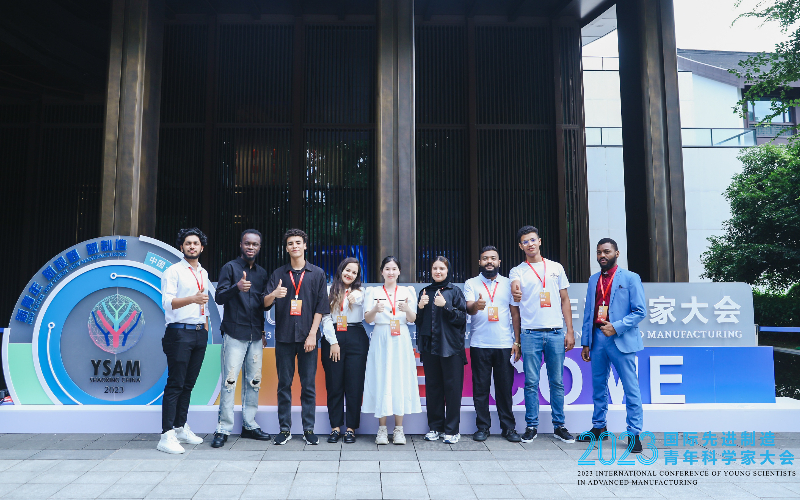Zhejiang feeling benefits of fiber-optic revolution
Province enjoys economic boost thanks to flow of information allowed by tech
For this year's edition of the World Internet Conference Wuzhen Summit, the venues have been fitted with 40 optical cables that can deliver information at a speed of 10 gigabits per second, in addition to 5G signal coverage.
"In contrast with the first summit in 2014, this year's edition will make people understand profoundly what the flying speed of internet development is like," said Wang Gang, head of the Publicity Department of the Zhejiang Provincial Committee of the Communist Party of China.
By September, Zhejiang had 3.9 million kilometers of fiber-optic cables in use and more than 160,000 5G base stations in operation. Every administrative village in the province has access to the base station network.
"Chinese people often say 'building roads is the first step toward becoming rich'. In the digital era, such a road is what we call the 'Information Highway'," Wang said.
With improvements to such digital infrastructure, the flow of information has been leading that of technology, capital, talent and material supplies to rural areas, especially the province's 26 mountainous counties.
So far, 34 counties in Zhejiang have been listed as national demonstration counties for e-commerce development in rural areas, according to the provincial government.
In 2021, the central authorities gave Zhejiang the mission to build itself into a demonstration area for common prosperity.
To achieve common prosperity, experts think the country should tackle the disparity of development among regions and between urban and rural areas, as well as income disparities between people.
Wang said Zhejiang has been making such efforts and he believed the key lies in rural areas.
"We have been striving to build digital villages, so that digital technology can better drive rural vitalization and integrated regional development," Wang said.
As an example, he pointed out that e-commerce sales of Zhejiang's rural areas surpassed 1 trillion yuan ($137.9 billion) in 2021.
In Suichang county of Lishui city, there are now more than 4,500 registered e-commerce shops.
With the conveniences brought by the internet, farmers have seen a rise in agricultural product prices by nearly 30 percent, which means higher incomes for them. Wang said that smartphones have become a new farming tool for villagers.
The report to the recent 20th CPC National Congress vowed to accelerate the development of the digital economy, further integrate it with the real economy, and build internationally competitive digital industry clusters.
The digital reform in Zhejiang, which has enjoyed profound advantages in manufacturing, has seized opportunities arising from technological revolution and industrial transformation.
In recent years, the provincial government has cooperated with manufacturers, science and technology institutes and financial institutions to generate momentum for the manufacturing sector via digital transformation.
For example, the province has launched the Future Factory application platform to provide manufacturers with full-process digital services. So far, the platform has benefited more than 60,000 local enterprises, whose average production efficiency has increased by 54 percent from 2020 and general costs lowered by 19 percent.
The province has completed construction of 41 future factories, covering various industries such as information and communication technology, new energy vehicles and intelligent manufacturing.
"A future factory is the more advanced form of a digital factory and intelligent factory," said Lu Shan, vice-governor of Zhejiang.
A future factory, as a new concept, refers to the extensive use of digital twins, artificial intelligence, big data and other new generation information technologies in all the processes of a manufacturing plant.
The goal is to improve the enterprise value chain and core competitiveness, leading the development of new intelligent manufacturing modern factories, according to the provincial government.
The province plans to increase the number of future factories to 100 in five years, Lu said.
Official statistics show that the added value of the province's digital economy was 3.6 trillion yuan in 2021, accounting for 48.6 percent of its GDP. At present, 7.3 percent of the added value went to research and development of the digital economy's core industries in Zhejiang.
In the Digital China Development Report (2021) released by the State Internet Information Office, Zhejiang ranked first among all provincial regions in the Chinese mainland.
At the province's Digital Economy High-Quality Development Conference held in July, the provincial authorities said the annual added value of Zhejiang's digital economy is projected to exceed 7 trillion yuan in five years. The annual added value of core industries for the digital economy will exceed 1.6 trillion yuan by then, they added.
zhulixin@chinadaily.com.cn





 play
play
